topwater
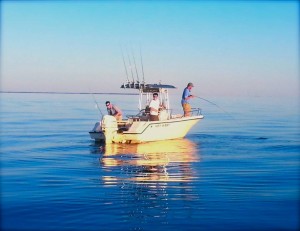 Hack [hak] (n) – A clever trick, skill, or shortcut to increase productivity and efficiency.
Hack [hak] (n) – A clever trick, skill, or shortcut to increase productivity and efficiency.
1. Find the bait first, then look nearby for the fish.
2. All things being equal, go with chartreuse.
3. Fish in areas where you can see the current moving.
4. The sneakier the angler, the bigger the fish.
5. Use dark colored lures in low light situations and rainy days.
6. Color contrasts attract fish. Read More!
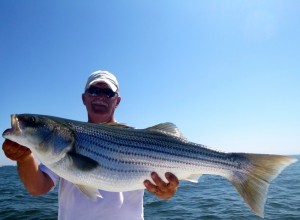 Congratulations to Rich Jenkins, 2013 Champion of the Kent Narrows Light Tackle Catch-&-Release Tournament. Rich fished with Jamie Clough, Jon Griffiths and me onboard my 27 Judge CC Thunder Road and won the tournament with a wide-shouldered 34-inch striper caught about 1:00 PM Saturday afternoon. Coming off the win, I thought it might be helpful to post some recommendations for catching bigger striped bass in Maryland’s portion of the Chesapeake Bay in June.
Congratulations to Rich Jenkins, 2013 Champion of the Kent Narrows Light Tackle Catch-&-Release Tournament. Rich fished with Jamie Clough, Jon Griffiths and me onboard my 27 Judge CC Thunder Road and won the tournament with a wide-shouldered 34-inch striper caught about 1:00 PM Saturday afternoon. Coming off the win, I thought it might be helpful to post some recommendations for catching bigger striped bass in Maryland’s portion of the Chesapeake Bay in June.
Topwater – Look around high-current points where there is access to deep water. Submerged rocks and other cover are a plus. Set up downstream and fan-cast into the direction of the current starting closest to shore. Look for the rip, that is a change in the waves around the point and work that area hard. On calm days, use a spook. In rougher water, try a big popper. Heddon Super Spooks, Lonely Angler Zipsters, and Stillwater Smackits are great lures for this time of year. Read More!
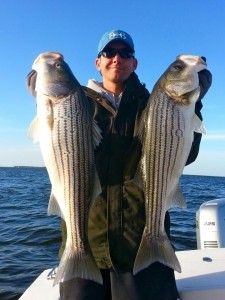 I’ve been lying low over the past couple of weeks waiting out the craziness. Most of my fishing has been in out-of-the-way places far from the madding crowds. Radios blaring, airplanes buzzing, stereos thumping, outboards droning, helicopters whirring, sirens wailing – Wow! Boat shows, trolling tournaments, and sailing regattas make the main stem of the Chesapeake very noisy. The Bay is fully awake from her winter slumber and the crowds are back in force. While we each enjoy the water in our preferred ways, to my thinking fishing should include elements of solitude and stealth. I’ve mentioned before that I’d rather pick up aluminum cans at rush hour along I-95 than try to pick off rockfish in the main channel on a busy trolling weekend. I prefer to look off the beaten path for places where I can tune-in to something a little more pleasing than the clamorous dissonance of the masses.
I’ve been lying low over the past couple of weeks waiting out the craziness. Most of my fishing has been in out-of-the-way places far from the madding crowds. Radios blaring, airplanes buzzing, stereos thumping, outboards droning, helicopters whirring, sirens wailing – Wow! Boat shows, trolling tournaments, and sailing regattas make the main stem of the Chesapeake very noisy. The Bay is fully awake from her winter slumber and the crowds are back in force. While we each enjoy the water in our preferred ways, to my thinking fishing should include elements of solitude and stealth. I’ve mentioned before that I’d rather pick up aluminum cans at rush hour along I-95 than try to pick off rockfish in the main channel on a busy trolling weekend. I prefer to look off the beaten path for places where I can tune-in to something a little more pleasing than the clamorous dissonance of the masses.
Since the striped bass spawn is winding down on the Chesapeake Bay, I thought it might be interesting to take a look at some post-spawn patterns. When stripers come off the spawning grounds, they’re usually hungry. If you can find them, they’re pretty easy to catch. Ah, but finding them, there’s the rub. Where should you look? Read More!
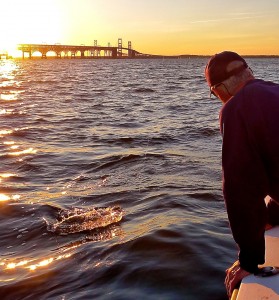 We’ve caught some very nice fish on Thunder Road over the past couple of weeks. Whether in the shallows or on the ledges, it’s fall on the Chesapeake Bay and time for trophy striped bass.
We’ve caught some very nice fish on Thunder Road over the past couple of weeks. Whether in the shallows or on the ledges, it’s fall on the Chesapeake Bay and time for trophy striped bass.
It’s a hot bite tonight. I’m fishing alone throwing topwater, a big chunky blue and silver Stillwater Smackit. Not my favorite plug, but pretty damn close. If you’ve read my book, you know where I am. If you haven’t, turn to page 50 in this month’s Chesapeake Bay Magazine and in his article, “Autumn Angling,” John Page Williams will tell you exactly where.
I’m right where John Page says I’ll be, working well inside the eight-foot-deep mark where the rocks come up to four. It’s a windy evening, too windy for topwater, but the bite is on and the fish don’t care.
There’s a full-moon-outgoing, so lots of current, too much current to stay over the spot for very long. The wind is blowing 17 knots from the northeast and building ahead of an approaching cold front. I’m drifting across the rocks way too fast. I compensate by slinging my lure as far as I can to lengthen my angle of attack. I imagine my fishing spot as a giant rectangular canvas with my lure painting a streak from the top corner to the bottom. The fish won’t hit unless I’m working the surface within four feet on either side of the underwater rocks. Unlike jigging where we work with portrait strike zones, for topwater, they’re landscape. Read More!
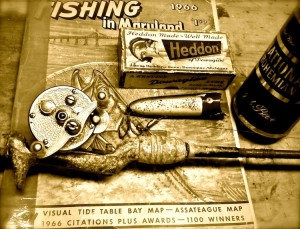 To look backward for a while is to refresh the eye, to restore it, and to render it more fit for its prime function of looking forward. ~ Margaret Fairless Barber
To look backward for a while is to refresh the eye, to restore it, and to render it more fit for its prime function of looking forward. ~ Margaret Fairless Barber
Sometimes I think that all I know about life comes from fishing. Other interests have waxed and waned, but the one constant, the fundemental source from which I draw strength and inspiration is the time I spend in pursuit of the perfect cast. It’s taught me a lot about life, the laws of nature, and basic principles of human interaction. I can’t recall my first boat ride, my first cast, or the first fish I caught because I can’t remember a time when any of those things were absent. Lately, as part of my Chesapeake Light Tackle mini book tour of Chesapeake Bay regional fishing clubs, bait shops, etc., I’ve been talking a lot about how science is gradually confirming what fishermen have known for generations. It almost seems like the more we learn by scientific observation, the more we confirm what fishermen have always accepted as fact. For example, most of the more than two-thousand anglers I’ve had the privilege to talk to recently were probably amused to learn that striped bass have a 50Hz visual flicker fusion frequency that is slightly slower than that of humans, but I haven’t encountered very many fishermen who are surprised when they hear that, as a result, the colors the fish see best in good light are chartreuse and white. Read More!
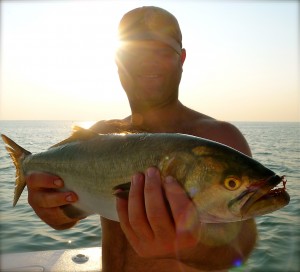 Not long ago we took breaking bluefish and rockfish for granted in the Chesapeake Bay. Unfortunately, times have changed. Since there are a lot fewer fish now, we have to look a lot harder and longer for summer breakers. Granted, it’s easier on some days than it is on others. In my book, Chesapeake Light Tackle, An Introduction to Light Tackle Fishing on the Chesapeake Bay, I dedicate several pages to methods for locating breaking fish. The best strategy for finding blitzing fish under working birds is to head straight for the closest oyster bar. In my reports, I often mention that I find fish over live, hard bottoms. By that, I mean places where there are active shellfish populations.
Not long ago we took breaking bluefish and rockfish for granted in the Chesapeake Bay. Unfortunately, times have changed. Since there are a lot fewer fish now, we have to look a lot harder and longer for summer breakers. Granted, it’s easier on some days than it is on others. In my book, Chesapeake Light Tackle, An Introduction to Light Tackle Fishing on the Chesapeake Bay, I dedicate several pages to methods for locating breaking fish. The best strategy for finding blitzing fish under working birds is to head straight for the closest oyster bar. In my reports, I often mention that I find fish over live, hard bottoms. By that, I mean places where there are active shellfish populations.
I typically plan all my fishing trips so that I keep my boat over as many oyster bars as possible. That includes when I’m just running from one place to another. For fish to feed on the surface in the Chesapeake Bay they need three primary ingredients. In the book, I abbreviate the formula like this: C + B/HB = BF. That’s current plus bait over hard bottoms equals breaking fish. Read More!



